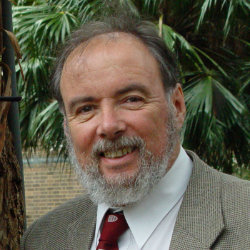IAN McAULEY. Pauline Hansons youth support
March 1, 2017
A recent survey has found surprisingly high levels of support for One Nation among young voters in George Christiansens electorate in northern Queensland. At first sight this seems incongruous with the Brexit and Trump votes, which showed younger people were more supportive of mainstream parties of the centre-left.
While the same factors that drove people to Brexit and Trump are to be found in Australia, there are some important differences, and we should not lose sight of the often dismal future faced by young people in non-metropolitan Australia.
In America the Trump vote was closely related to education (more precisely a lack of it), race, religion, region and age.
Some, but not all of these factors are in play in Australia. While we are far from free from racial division, there is nothing in our country even remotely comparable to Americas legacy of slavery and the Civil War, and that countrys enduring hypersensitivity to race. And while we have many groupings of religion and of no religion we have no movement comparable to the 26 per cent of American voters who describe themselves as white born-again/evangelical Christian a bloc that voted 81 per cent for Trump.
In Australia there is certainly a regional dimension to our voting, revealed in Australian Electoral Commission data. The further one lives from our coastal capitals the stronger is the support for non-establishment parties. Figures I have presented on this same blog show that in our federal election last year, while established parties the Coalition, Labor and the Greens held 90 percent of the vote in urban areas, in provincial electorates (as defined by the Electoral Commission) their vote was down to 87 percent and in rural electorates 81percent, where a Melbourne Cup field of independents and small parties gained the balance.
Using the same classification but with more finely-grained detail (the distance of polling places from state capital GPOs) Professor Simon Jackman has found a very strong relationship between remoteness and voting patterns even within our big cities. He points out for instance that, with few exceptions, within 10 km of state GPOs the Green vote falls to less than one percent. In remote booths in New South Wales the vote for non-established parties in last years election was as high as 40 percent and in some remote Queensland booths it reached 50 percent.
This pattern was confirmed this year in a Reachtel Survey of voting intention in the seat of Dawson, commissioned by the Australia Institute. Dawson stretches along the Queensland coast 350 km northwest from Mackay, and is held by George Christiansen for the Liberal National Party.
That survey found One Nation and the Liberal National Party level pegging at 30 percent each. The headline story was about Christiansens understandable anxiety, and by extension anxiety in the Coalition about bleeding votes to One Nation. (Its notable that the Murdoch media picked up on One Nation taking the Coalitions vote, giving it more prominence than Labors ten point lead in the Newspoll released on the same day. Nothing must detract from The Australians support for Abbotts far-right agenda.)
These headline-grabbing figures obscured another strong finding in the Reachtel Survey, which broke down the One Nation support by age. The generally-accepted view, drawing on the Brexit and Trump votes, is that older people who have seen the world they once knew fall apart are more likely to support parties such as One Nation. But in Dawson among people aged 18-34 One Nation support is 44 percent and it falls away among older age groups. (It is only 24 percent among those aged 65 and over.) The same survey finds that the 18-24 age group had highest support for the Greens at 6 percent.
One probable explanation for this revealed discontent with the established parties lies in a high level of youth unemployment. A Brotherhood of St Laurence survey last year found rates of youth unemployment in excess of 20 percent in large areas of non-metropolitan Queensland. Undoubtedly these rates are elevated by a loss in these regions of young people who have left to study or to work and have never come back.
In Australia the cards are stacked against younger people high housing costs, high fees for university and other avenues of higher education, private health insurance lifetime cover, generous tax provisions for self-funded retirees. If one lives in a remote region there are often prohibitive relocation costs impeding access to higher education (no living with mum and dad, and even if accommodation is available the young people would be risking their lives on the criminally underfunded Bruce Highway), and if one is unemployed in a remote region there is a threatened further weakening of the Newstart allowance.
No wonder young people left behind in remote regions are angry enough to support One Nation.
Ian McAuley is an adjunct lecturer in public sector finance at the University of Canberra, and a fellow of the Centre for Policy Development.
